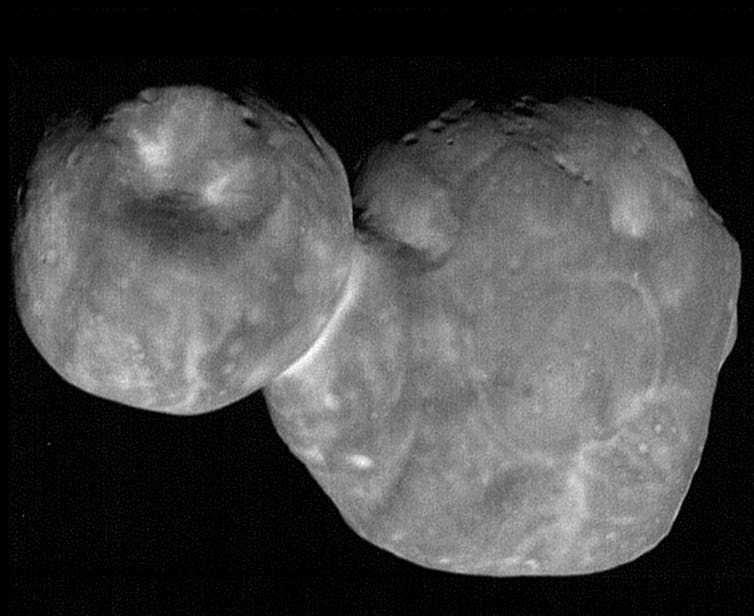Counting Small Objects in the Kuiper Belt, and What it Means
Pluto is in the Kuiper Belt and is the largest object in the belt. We know of a few thousand more ranging in size down to several tens of kilometres in size. But smaller objects are too faint to see with telescopes.
So, how to estimate how many small objects are there in the Kuiper Belt?
THIS PAPER describes an ingenious way of doing this. Count and measure the size of craters on Pluto and its moon, Charon.
Flyby images allow craters as small as 1.4km to be mapped. Those must have been made by impacts of Kuiper Belt objects not much bigger than 100 metres in size.
Crater sizes down to 13km (produced by objects about 1 to 2km in size) have a distribution which matches expectations. But smaller craters are much less abundant than expected. So a dearth of smaller Kuiper Belt objects.
 |
Kuiper belt object 2014 MU₆₉. The two-lobed object is about 30km from end to end. NASA/Johns Hopkins Applied Physics Laboratory/Southwest Research Institute, National Optical Astronomy Observatory
The object photographed is better known as Ultima Thule. And close examination of the photo suggest a reason for the lack of smaller objects in the Kuiper Belt.
Each of the lobes seems to be formed of component parts that merged vigorously enough to squish together into an approximate sphere, but with insufficient violence to smash each other apart. This has been called "BLORPING". "FLOMPING" describes the coming together when two lobes meet without causing any deformation.
Because the Kuiper Belt is so far from the sun, orbital speeds are slower, and therefore collisions would be less violent. Instead of falling apart the small objects would tend to amalgamate - and thus the lack of smaller impact craters on Pluto is explained.
There is more in this article than I have written about - it is well worth reading!
|

No comments:
Post a Comment